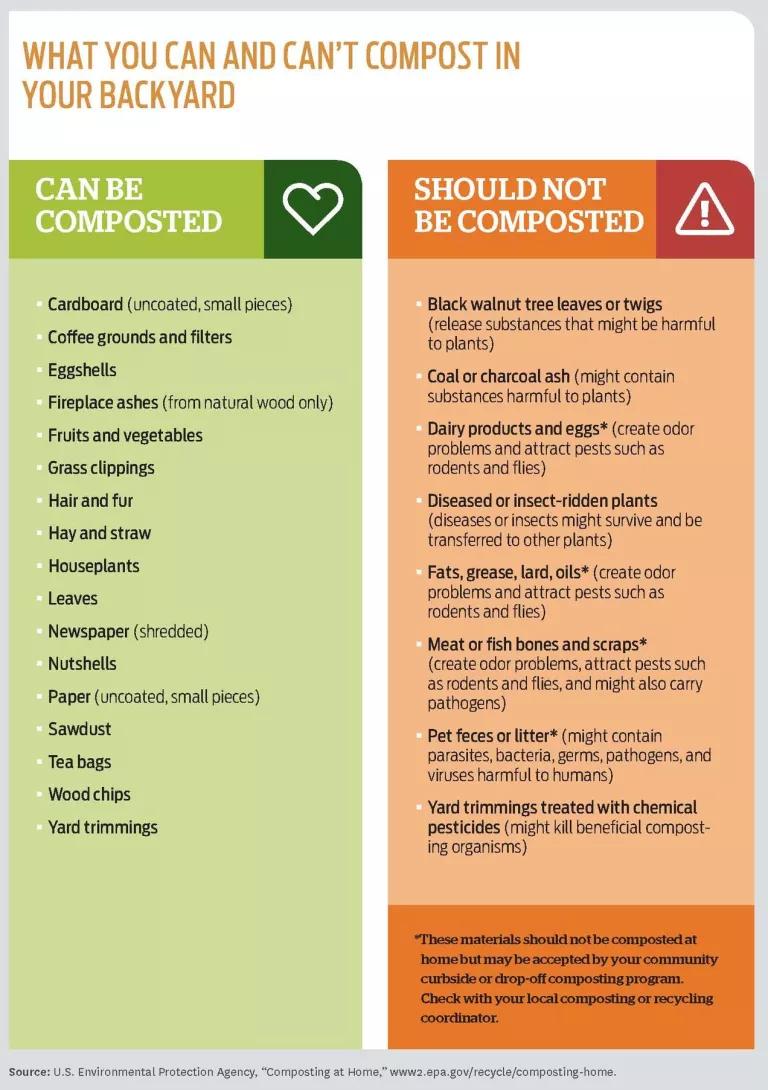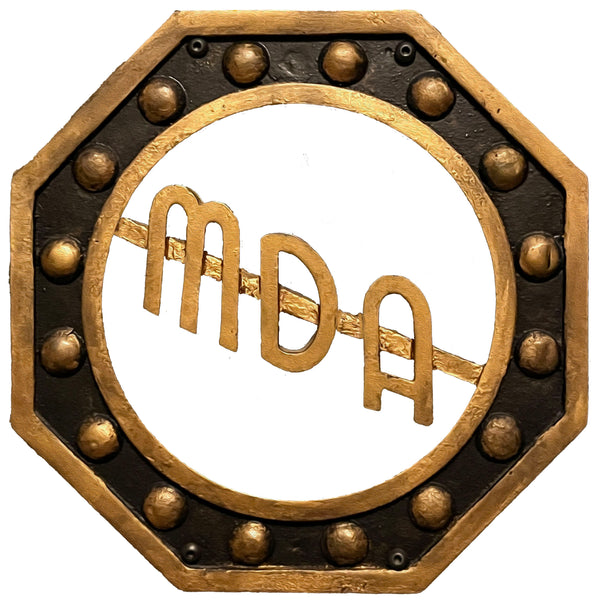COMPOSTING SIGNUP
The MDA is proud to announce that we're launching a composting program for residents to help reduce our building’s carbon footprint. Participation is free, however, participants will need to supply their own individual collection bins and attend an informational session on composting best practices. To enroll, please enter your contact information below. To learn more about composting, scroll below the signup form.
The information below comes via the National Resource Defense Council (NRDC).
What is Composting?
Composting is the natural process of recycling organic matter, such as leaves and food scraps, into a valuable fertilizer that can enrich soil and plants. Anything that grows decomposes eventually; composting simply speeds up the process by providing an ideal environment for bacteria, fungi, and other decomposing organisms (such as worms, sowbugs, and nematodes) to do their work. The resulting decomposed matter, which often ends up looking like fertile garden soil, is called compost. Fondly referred to by farmers as “black gold,” compost is rich in nutrients and can be used for gardening, horticulture, and agriculture.
Organic discards can be processed in industrial-scale composting facilities, in smaller-scale community composting systems, and in anaerobic digesters, among other options. This guide focuses primarily on home composting, which is a great way to keep your organic discards out of the waste stream and produce a valuable soil amendment for your own use.
Benefits of composting
Reduces the waste stream
Composting is a great way to recycle the organic waste we generate at home. Food scraps and garden waste combined make up more than 28 percent of what we throw away, according to the U.S. Environmental Protection Agency (EPA). Not only is food waste a significant burden on the environment, but processing it is costly. The average cost to landfill municipal solid waste in the United States was around $55 per ton in 2019. With the United States generating more than 267 million tons of municipal waste in 2017 and sending two-thirds of that to landfills and incinerators, we spent billions of dollars on waste management. Composting at home allows us to divert some of that waste from landfills and turn it into something practical for our yards.
Cuts methane emissions from landfills
Typically when organic matter decomposes, it undergoes aerobic decomposition, meaning that it’s broken down by microorganisms that require oxygen. When compostable waste goes to a landfill, it gets buried under massive amounts of other trash, cutting off a regular supply of oxygen for the decomposers. The waste then ends up undergoing anaerobic decomposition, being broken down by organisms that can live without free-flowing oxygen. During anaerobic decomposition, biogas is created as a by-product. This biogas is roughly 50 percent methane and 50 percent carbon dioxide, both of which are potent greenhouse gases, with methane being 28 to 36 times more effective than CO2 at trapping heat in the atmosphere over a century. Although most modern landfills have methane capture systems, these do not capture all of the gas; according to the EPA, landfills are the third-largest source of human-generated methane emissions in the United States.
Because our solid waste infrastructure was designed around landfilling, only about 6 percent of food waste gets composted. However, states, cities, and individual businesses and vendors can spearhead zero-waste strategies to increase composting and recycling rates within their jurisdictions and to keep waste from being generated in the first place. There have been many composting success stories around the country, one notable example being San Francisco. In 1996, San Francisco established a large-scale composting program, and by 2000 it was able to divert 50 percent of its waste from landfills. By increasing its goals over the years, San Francisco has been diverting more than 80 percent of waste from landfills since 2012. That means more than 90,000 metric tons of carbon emissions are avoided each year—equivalent to the annual greenhouse gas emissions from 20,000 passenger vehicles.
Improves soil health and lessens erosion
Compost is an essential tool for improving large-scale agricultural systems. Compost contains three primary nutrients needed by garden crops: nitrogen, phosphorus, and potassium. It also includes traces of other essential elements like calcium, magnesium, iron, and zinc. Instead of relying on synthetic fertilizers that contain harmful chemicals, composting offers an organic alternative. Research has shown the capability of compost to increase soil’s water retention capacity, productivity, and resiliency.
Conserves water
Agriculture is a major consumer of water in the United States, accounting for approximately 80 percent of the nation’s water use, according to the EPA. Irrigation systems are effective but are expensive and time-consuming for farmers to manage. Additionally, water is becoming increasingly difficult to obtain across the country.
How can compost help? Research has shown the water-retaining capacities of soil increase with the addition of organic matter. In fact, each 1 percent increase in soil organic matter helps soil hold 20,000 gallons more water per acre. By using compost to foster healthy soil, farmers do not have to use as much water and can still have higher yields compared with farming with degraded soil.
Reduces personal food waste
Consumers are responsible for a staggering amount of wasted food. An average American family of four throws out about $150 worth of food per month, a 50 percent increase since the 1970s. NRDC research in three U.S. cities indicated that the category of edible food most wasted by households was fruits and vegetables. According to a 2016 report in The Guardian, U.S. retailers and consumers throw away about 60 million tons (or $160 billion) worth of produce annually. The best way to reduce impacts from food waste is to prevent waste from occurring in the first place, so NRDC works through its Save the Food campaign and other tools to educate consumers on how to shop for, prepare, and store food to minimize waste. However, even if we do everything possible to decrease food waste, there will still be food scraps that cannot be consumed (e.g., a banana peel). Composting is a great way to recycle those discards instead of tossing them in the trash.
What can you compost?
Anything that comes from the ground can be composted at home. While animal products can often be composted in municipal composting systems, at-home composting should avoid those items as they can attract animals and insects and leave pathogens in the final product.
What not to compost
Pet waste
Pet waste contains parasites and bacteria that can be harmful to humans and other animals if ingested. These pathogens can find their way into your body if you use compost that contains pet waste as fertilizer on edible crops. Compost must reach and remain at a minimum of 131 degrees Fahrenheit for three consecutive days to kill pathogens found in pet waste, and it is hard to regulate and monitor that if you are composting at home. It may be possible to compost dog waste in a home system, but you must follow USDA guidance carefully to ensure the proper conditions, and you should not include cat or any other pet waste. The USDA has resources that provide step-by-step instructions on how to compost dog waste, along with some recommendations to decrease health risks, including:
- Confining the compost pile to a specific area in your yard
- Not feeding dogs raw meat or fish and not including waste from unknown dogs
- Not applying dog waste compost to crops you intend to ingest
- Keeping children away from the compost pile
Inorganic materials, such as plastic
Colored or glossy paper
Specialized color or glossy paper may contain toxic materials from the printing inks and additives that may be harmful to humans, animals, and plant life.
Diseased plants
If your pile doesn’t reach a high enough temperature, plant diseases might survive and be spread to other plants when you use the compost.
Dairy and other animal products
While animal products (meat, fish, eggs, bones, dairy, grease, fat) are organic, they can create odor problems and attract flies, rodents, and other pests to your pile or bin. These products can also carry pathogens that may survive the home composting process. You can trench compost small amounts of animal products.
These materials should be kept away from at-home compost collections. However, if you have a large amount of these materials, see if your municipality accepts food waste for composting, or reach out to a nearby composting program that may accept these items. Large-scale composting facilities can often take in these materials and compost them without the risks faced by a home composter.
